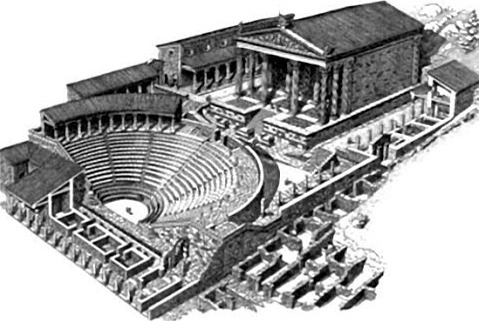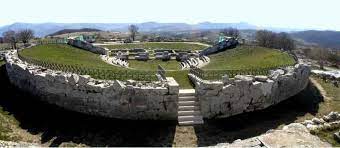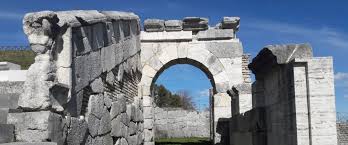The ancient Bovianum Vetus, today Pietrabbondante



|
The ancient Bovianum Vetus, today Pietrabbondante |
|
|
|
|
|
|
|
| Already from the XIX° century, Molise has been source of study for archaeologists of the whole world, because of the notable discoveries in the zone of Pietrabbondante. From the effected studies, emerged that these earths were inhabited since the IV° Sec. b.C. (we have finds dated by the IV° to the I° Century. a.C.) from the Osci (italic population originated after the end of the Etruscan supremacy in central-southern Italy), that bequeathed a real monumental complex. The historian that set for first the attention on Molise and particularly in this area, was Mommsen Meodor in 1846. It was really him following a translation of a inscription in language osca, to individualize this zone as the place of " Bovianum Vetus", capital of the Sannio (area that include actual eastern Campania, Molise and southern Abruzzo). More archaeological campaign were necessary to bring to the light the " Pietrabbondante’s Sanctuary of the Sannio ", so denominated by the researchers. In 1857 the smaller temple or temple A. and the theater were discovered; but only in 1959 it was brought to the light the most greater temple or temple B. During others campaigns it was also discoverd another temple, apart from the two already open, situated in the inclusive space between the theater and the most greater temple; also this temple was dated to the IV° century b.C.. The only rests of this ancient temple are the bases of the columns; of square form was constituted by soft calcareous stone and the columns were adorned by bas-reliefs in terracotta and from ionic capitals, from which the name of Ionic temple. Its destruction seems both work of the Carthaginian Annibale in 217 a.C, but many of the material that composed it was used for the construction of the temple B. | |